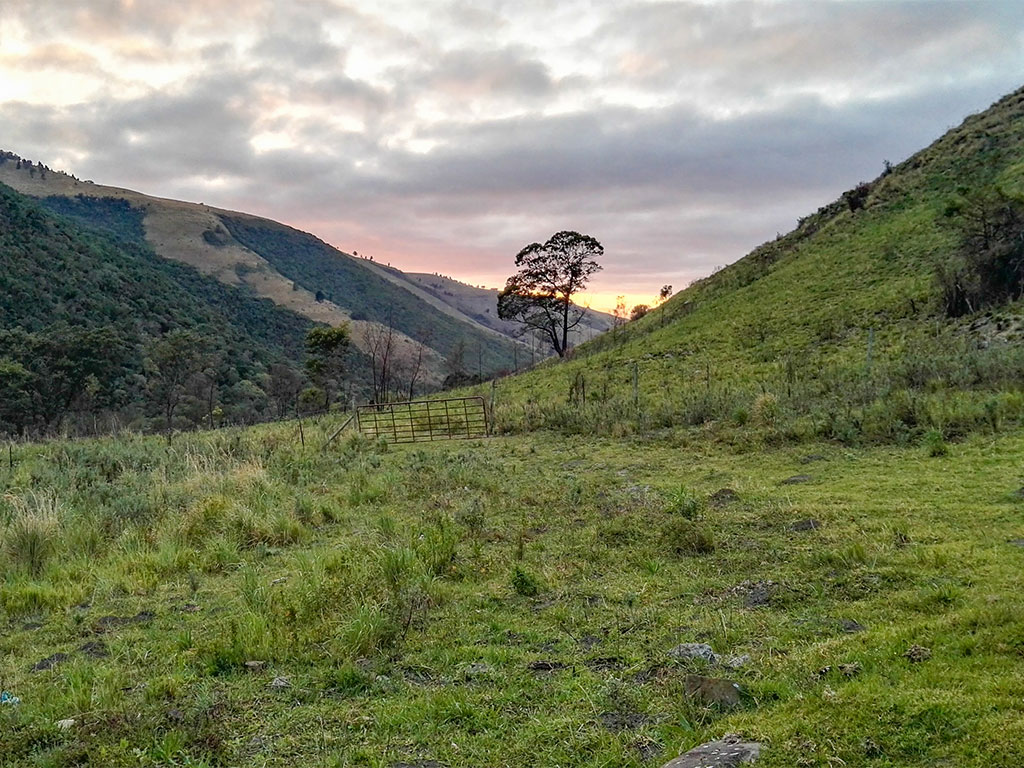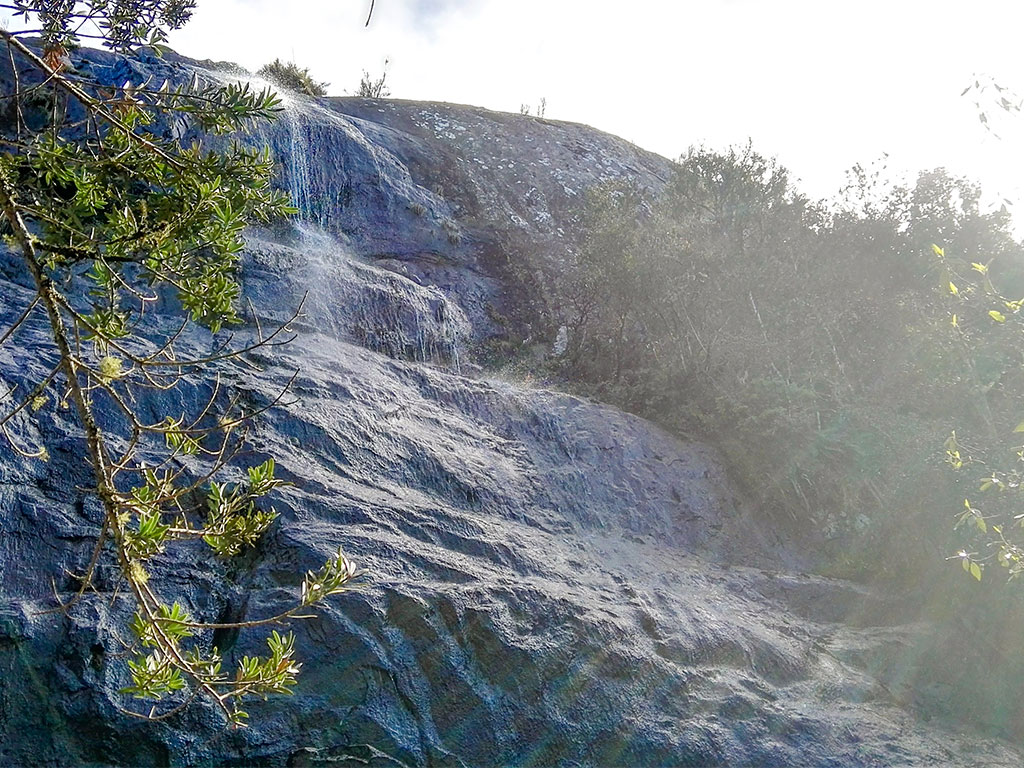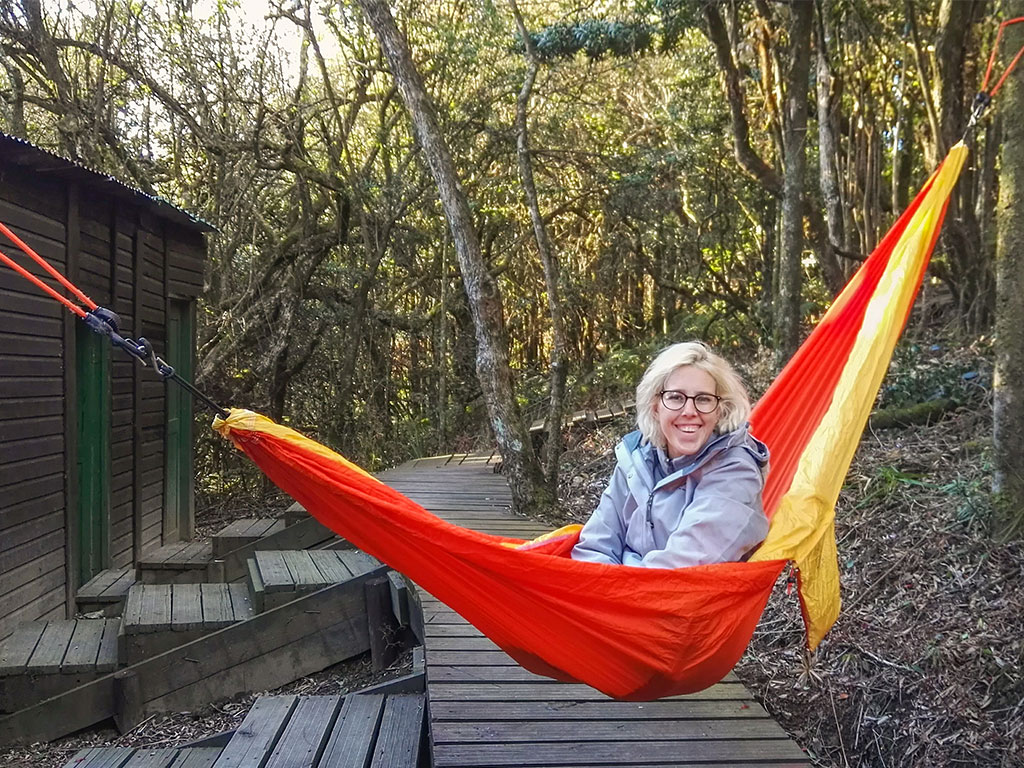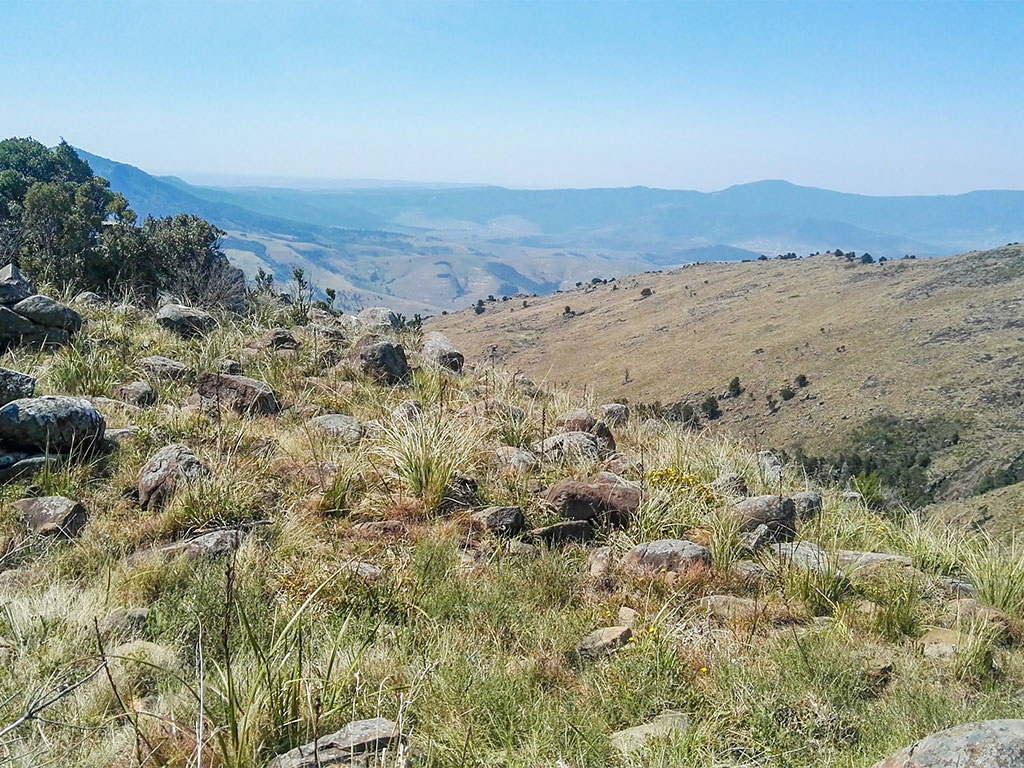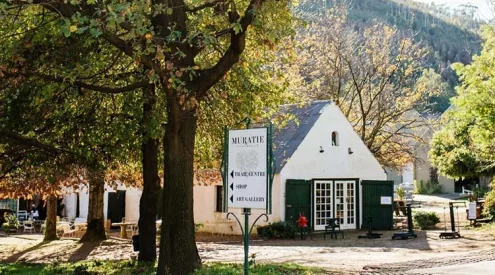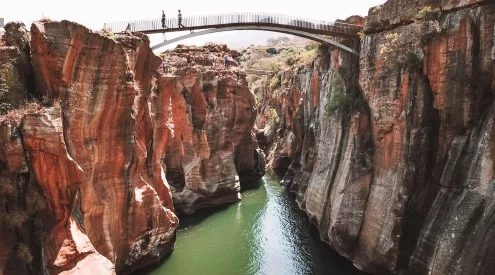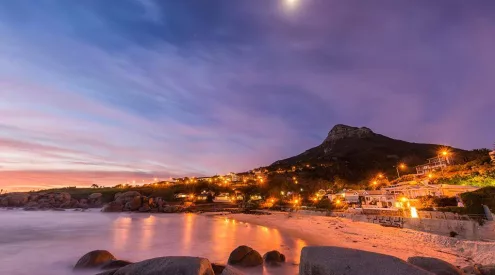The Amatola Hiking Trail is unbelievably scenic and spectacularly gruelling. The six-day, five-night hiking trail traverses the breathtaking Amatola Mountains in the Eastern Cape, starting at Maden Dam near King Williams Town and ends in the magical village of Hogsback.
Alexander Higgins completed the hiking trail last year and shares his advice for tackling South Africa’s toughest hike.
Also read: The South African hiking bucketlist
Over the years the trail has garnered a mythological reputation as one of South Africa toughest and most scenic hiking experiences. Weary hikers return with tales of untouched virgin forests, endless waterfalls, fantastic views, and a landscape that stretches even the accomplished hiker to their physical and mental limits. All of the rumours are true.
For myself, and a small group of friends and family, the Amatola Hiking trail was simply unforgettable. It will forever live as one of the most incredible feats we have undertaken. The hike lives up to its reputation in an almost picture book style cliché. The forests are indeed magical, the air fresh, the rivers and waterfalls filled with crystal clear water, and the going is tough as nails. There are only a handful of kilometres where you are not ascending or descending. Even when you are not going up or down the terrain is not easy to walk and you often have to navigate tree roots, uneven paths, rocks or thick brush.
Also read: Tracking Cape Parrots through Hogsback’s beautiful forests
I should say at this point that none of the members of our team was particularly fit. Nobody had done the hike before and it was by far the longest hike my wife and I had ever done.
What got us to the end? Meticulous preparation
For us, this meant spending as much time as possible hiking day trails around Johannesburg with our packs full of food and bricks (yes bricks!) to emulate the roughly 10-12kgs we would need to carry.
The 11-kilometre hike at Hennops is a great starter and the 13-kilometre option at Rustig in the Magaliesburg is a good emulation of the types of gradients you will experience doing Amatola.
All of our preparatory hikes gave us a good indication of our physical and mental fitness levels, how we would need to adjust or customize our packs, and what issues we were likely to encounter. For example, we both found we were prone to blistering in unusual patches on our toes, which is why we hiked Amatola with a myriad of small toe cushioning pads we wouldn’t have otherwise packed.
How to plan for the Amatola Hiking Trail
Getting there
Get up early and allow at least an hour to go over the meticulous checklists you should definitely have written out. All major routes into the Eastern Cape are well tarred and easy going. Aim to arrive at Away with the Fairies in Hogsback by 17:00 at the latest to allow enough time for the debriefing, a hearty dinner and an early night. Pay close attention at your debriefing and ask questions. Before you go to bed take a moment to go over the information with your team and make sure you are all on the same page. Use this time to compile questions you think have not been answered so you can pose them to your guide the next day before you leave. You cannot be over prepared.
Also read: 10 ultimate stays in Hogsback for nature lovers
Day to day on the Amatola
Get up at 05:00 to give yourself two hours to eat, make final checks, prep your packs, walk around a bit with the weight, make last minute adjustments and be ready to leave in the shuttle by latest 07:00 on the first day of the hike. The shuttle takes you to Maden Dam, where the hike begins. All of the hiking on day one happens in a forest and is a mostly gentle, but steady upward climb with a somewhat steep ascent for the last three to five kilometres. Once at the hut get the fires for cooking and heating water going as soon as you can. Get to bed early.
To get the most out of the rest of your days make sure you get up and hiking as early as possible, get your fires going as soon as you get to camp, and get to bed early.
On day three (Dontsa to Cata hut), unless you are seriously fit, take the longer of the three options (18Km). It is the less pretty route, but also the safest and least tough route. The shortest trail is severe (ascending a waterfall) and unless you are Iron Man-tough, it will take from you what you will need for the days ahead. Plus, if you make good time taking the longer route you will still have time to walk to the waterfall and appreciate it without having to traverse it.
Take every opportunity to swim.
Agree on a time when the group will stop for lunch. This rhythm and opportunity to regroup is great for the mental and physical capacity of the group. We only messed this up on one day and it ended up being tougher because of it.
Booking and budget
Booking is essential and can be with Amatole Trail Bookings. The best time of year to do the hike is in September when it is not too hot or too cold and doesn’t rain as much. I recommend that you not book any later than six months in advance to ensure a spot and allow yourself ample time to prepare. The hike costs R1620 per person (which includes accommodation on either side of the hike at Away With The Fairies) and you can budget around R700-R800 per person for food. You should also budget for transport to and from Hogsback.
Every gram counts
There is no slackpacking option, so you carry everything you will need for 6 days on your back. If it can be decanted, decant it. If it doesn’t have to be metal, replace it. Ziplock bags are your best friend and can be used for a multitude of storage needs. You do not need to bring tents, only lightweight sleeping bags, as there are huts with mattresses at the end of each day.
Tip: separate your trail mix and snacks into 6 separate Ziplock bags that can be kept fresh and close at hand while hiking. This can also help to distribute the total weight of your daytime rations across you pack.
Meal Prep is a must
Plan your meals according to weight to energy ratios. We found that rice (white rice in particular) although reasonably light, took up a lot of prep time and is not as filling as something like couscous. If you can, make every hiking dinner at home first and try to work out the minimum amount of ingredients you will need. Not having to carry 150g of an unnecessary ingredient will help more than you can imagine.
Oats is probably your best bet for breakfast and you can have fruit with it every day if you bring along hardier fruit such as apples and pears. We even managed to have strawberries with our oats on two of the mornings by prepping them beforehand. Slice a punnet of strawberries and place them in a Ziploc bag with two tablespoons of water and two teaspoons of sugar. They can get a bit mushy but they will still taste great and will be a welcome burst of sweetness and energy.
For the days that you know you might get into camp late, pre-slice your ingredients and place them in Ziploc bags as well. Oil and salt seem to preserve most things. Our greatest foodstuff revelation had to be peppers. They are light, hardy (will stay fresh in your pack for 6 days) and can be used as a fresh, crunchy element or and additional filler in most cooked meals.
Items we could not do without
Hiking sticks: These are a must for the Amatola as they help distribute the weight of your pack across four points rather than two. They take the strain off your knees on the downhill section in particular and means the difference between getting all the way to the end or dropping out after day three (just ask our team member who didn’t bring any).
Small lightweight hammock: Most of your lunch breaks will be taken in a forest somewhere and most of the huts have somewhere you can set one up. Having the ability to feel completely weightless and take the weight off weary limbs is worth the time it takes to set up. This is something that was recommended to me and I cannot overemphasize the massive difference mine made to my ability to complete the hike.
Anti-inflammatory pills and muscle rub: When and how you take either of these is up to you. I guarantee that they will give you the last 10% you didn’t think you had in you.
A small lightweight axe: Considering how we suggest you shed as much weight as possible carrying around an axe may seem counterintuitive. However, there is bound to be someone stronger and more gung-ho in the group who will happily strap it to their pack and it helped immensely. All the huts have wood but not all the wood is fire size and not all the huts have axes (these seem to be the same huts).
Rope or string: If you bring a hammock you will need a good amount of string or rope to secure it. A hitchhiker should have a towel and a hiker should have rope of some kind. The number of possible uses are endless. Just make sure you have some.










